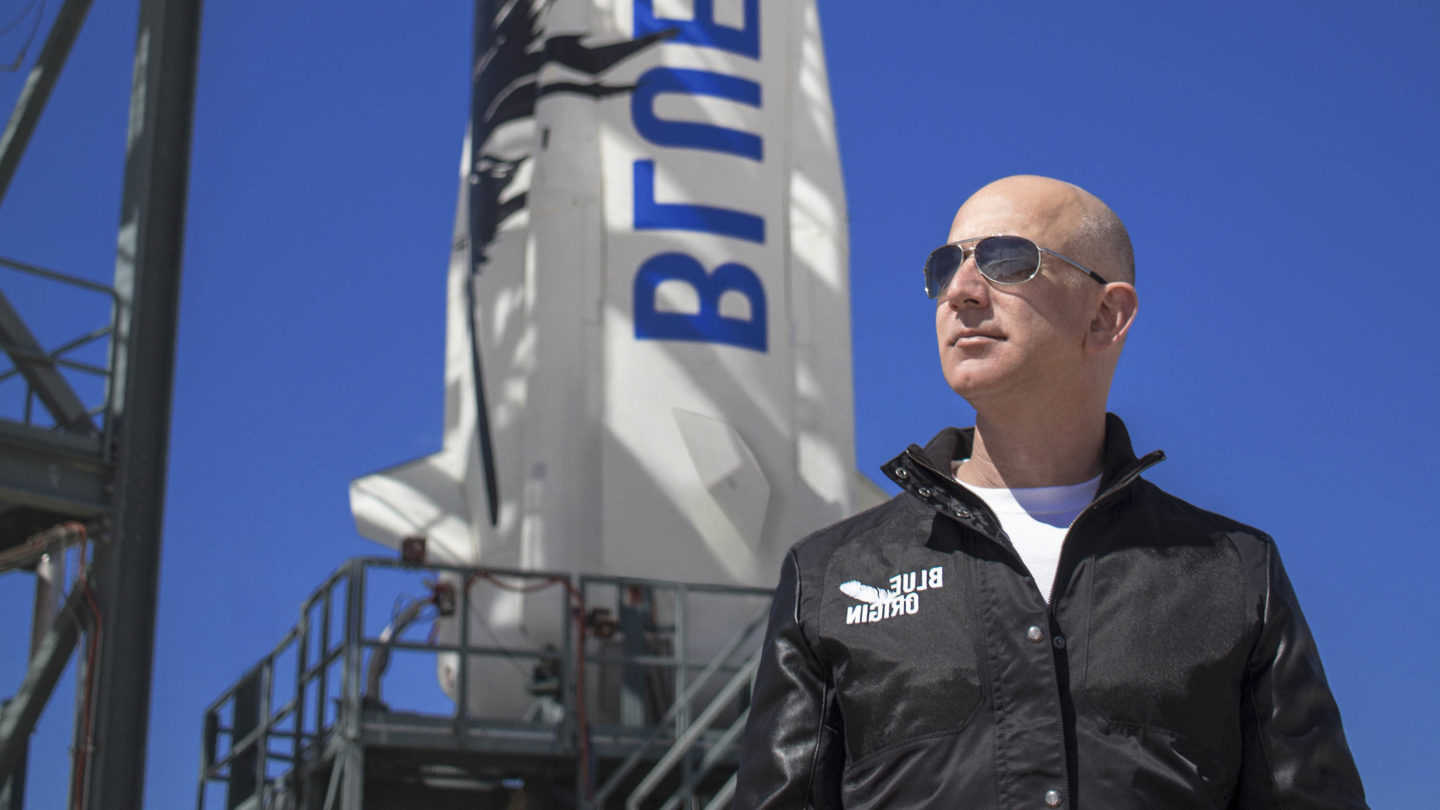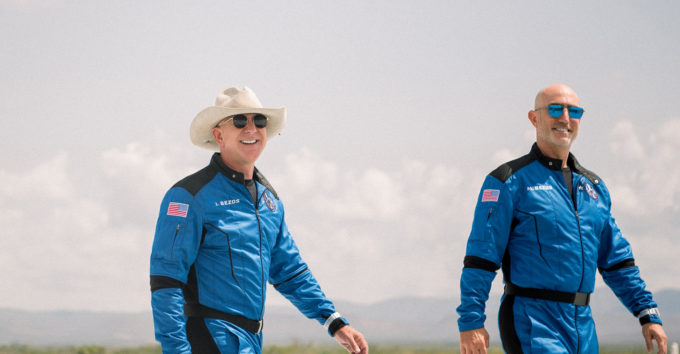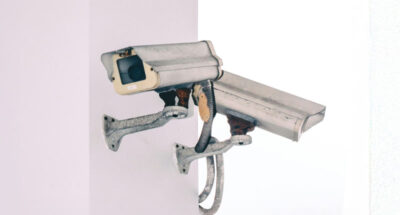
Trust is like a dance. Learn the steps to be a better leader
To waltz smoothly through office life, we need to balance vulnerability and honest feedback. And it’s perfectly fine to step on someone’s toes occasionally....
Audio available

by Ben Bryant, Sally Bonneywell, Dena Michelli Published 24 December 2021 in Leadership • 11 min read •

The CEO role is usually the pinnacle of a career, the corporate equivalent of flying to the Moon or scaling Everest. But as any astronaut or mountaineer can attest, the descent is likely to be just as perilous as the ascent. It requires an adjustment in mindset and a laser-like focus on the risks and choices that lie ahead. It’s the same in the business world.
The COVID-19 pandemic has brought this dilemma into sharper focus. The outbreak has pushed thousands of people into early retirement and forced many to reassess their priorities. With the average age of people running S&P 500 companies getting older as boards prioritize stability over succession, many leaders may soon be thinking: what could and what should I be doing next?
One obvious example is Jeff Bezos, who at 57 stepped down from the helm of Amazon earlier this year. He is keen on a second act and is turning his attention to projects such as tackling the climate crisis, his ownership of The Washington Post, and commercializing space flight with his startup Blue Origin.
“I’ve never had more energy, and this isn’t about retiring,” he wrote in his letter to Amazon staff. “I’m super passionate about the impact I think these organizations can have.”
While there is an abundance of research that explains how people become CEOs of Fortune 500 firms, and how to stay in the role, there is limited information about what happens to CEOs once they step away from the top job, and what they do with the next stage of their lives. At best, the research suggests what they could “do”. But the question “what will you do when you step down?” is perhaps not as helpful as the question, how will you approach the choices that might present themselves?
How should we explore these opportunities in an age of prolonged pre-retirement, with many baby boomers now working well into their 70s and beyond? Based on our work with senior executives who have stepped down, we have found that there are three key choices that can help shape our thinking about the next stage, and the choices that we make.

The first step is to think about what you want to descend to. Most leaders will want to leverage their competencies to find stimulating activities. Most research and advice suggest that becoming a non-executive board member, for example, or coaching and mentoring the next generation would be a good fit. This is a good idea, as it makes the most of experiences and capabilities, and in so doing keeps the ego relatively intact. It accepts the decline or shift in responsibility gracefully. This path can be thought of as displacement – displacing a leader’s identity from one context to another – while hanging on to their competence, ego and identity.
Others who have been well-remunerated may search for a social purpose and find roles in the not-for-profit sector. Some will speak out on heated social or political issues. Finding a satisfying second act should be thought of as a process of discovery. It means sitting with uncertainty until a door opens that you are curious to enter. It may lead to finding a role that you never expected to find. Kees van der Graaf, former president of Unilever’s frozen food and ice cream business, stepped down from corporate life in 2008 (His last role was as a member of the Unilever Executive responsible for Unilever’s European businesses), and he spent the subsequent years experimenting and exploring different paths. He partnered with IMD professor Tom Malnight to interview 175 CEOs, and together they wrote the book, Ready? The 3Rs of Preparing your Organization for the Future, which explores what they discovered from other leaders. Van der Graaf also took on roles in sectors very different to his corporate experiences, which he later described as a “completely new world”. Herb Riband stepped down from a 30-year executive career to pursue a fellowship at Stanford’s Distinguished Careers Institute. The move led to a new life and career focused on developing and implementing human-centric solutions to global health, healthcare delivery and healthy ageing.
Finding the enthusiasm to discover something new after stepping down is challenging. Displacement is easier and can be very rewarding. But the never-ending search for career success and avoiding failure can become addictive. Failure is inevitable, so an unwillingness to discover new things might become a source of disappointment. The descent may lead to despair if you allow ego preservation to determine your future choices.
There will always be many versions of a leader’s legacy. Trying to get the correct version out is not only futile, it keeps leaders trapped in the past.
It is natural for former CEOs to become captivated by a desire to manage their reputation after they have stepped away. Whether it’s to ensure their legacy is intact, give their version of events, or even avenge rivals, the major beneficiary of reputation management will be the feelings of self-worth and achievement of the CEO. There will always be many versions of a leader’s legacy. Trying to get the correct version out is not only futile, it keeps leaders trapped in the past.
There will be a temptation to write memoirs to set the record straight, or contact journalists who can tell their side of the story. The temptation is often to share these things publicly. Many former bosses write memoirs, give interviews to journalists, or become the subject of MBA case studies, especially if their departure from the top brass was acrimonious. While it is tempting to spend energy correcting the perception of the past, doing so also keeps us imprisoned by the past.
“Sense making” is an iteration between past and the present. It requires an awareness of how our history defines and constrains our identity, while continuing to pay attention to signals, thoughts and moments in the present context. The present and the past may not immediately reconcile or make sense, but this is an opportunity. Let’s take the case of a former senior executive of a family business (who interestingly, wishes to remain anonymous). She gave herself six months after her departure as the CEO of a mid-sized company, and then began to engage in exploration, trying many different avenues which touched on family foundation, philanthropy, reeducation, fashion, design, and photography. Some of these were things that she might have been interested in during her 20s, but she dropped them due to pressure to enter the family business. As she explored these different domains, she noticed how her need to feel competent kept coming back. . But she persisted, and as she did so, she started to be kinder to herself. “Can I only feel joy if I am brilliant at what I do?” As time went on, she developed a portfolio of activities, that had a common theme of education. “It was as if I relived my twenties – a chance to reshape my identity”. And as she become more comfortable with her “educational activist” identity, she gradually saw connections with her previous life as a CEO.
Shifting identity is not easy. It is uncomfortable. If a leader has engaged in exploration, they will have opened doors that would not have been opened otherwise. “Sense making” is an integration of the door behind us and the door in front of us, between new and old. Ironically, it is the dissonance between the present and the past that brings insight and potential renewal. Simply telling a good story that creates a legacy might satisfy our self-esteem, but will have little impact on how we renew ourselves and move forward.
Learning is difficult while in CEO roles, but once the descent begins, it’s an opportunity to lean in and look at all the things that were too hard to look at while you were CEO, including your sources of self-esteem and competence. Staying where you felt you have always belonged is the easier path.

“Removing the armor of the CEO role will initially feel very exposing. Public catharsis will keep you stuck in role, while private catharsis can be the beginning of a new journey.”
A CEO role demands huge reserves of emotional containment and resilience. Most will have experienced a mix of vilification and idealization by the time they step away. People will have projected their own inadequacies onto such visible leaders, as well as imagined things about them that are exaggerated at best, or simply not true. Stories about CEOs are omnipresent, exaggerated and reconstructed as words are taken out of context. All this takes a huge emotional toll, and in spite of the vulnerability toolbox, most CEOs are selective in sharing their emotions publicly.
Once they step away, leaders do need to let go of pent-up anger and frustration to move on successfully. Being in the limelight all the time takes an enormous emotional toll.
But letting go is a private process. It is not about setting the public record straight (this would be legacy-making). Letting go is about removing thoughts and feelings from internal chatter so that we can move on. Letting go can take two forms – either they compartmentalize and rise above the pain of our past experiences, or they move towards the experiences to explore in depth with the help of a therapist or experienced executive coach, in the hope of a cathartic release.
The mere thought of catharsis after stepping down can be terrifying to CEOs because they are so used to holding everything in. Many CEOs will tend to say “I’m fine” because that’s what they have learnt to do in role. Yet we know from studies of grief that catharsis is a first step towards renewal and transformation. But the descent is steep, and requires leaning into some harsh truths as well a sophisticated understanding of role.
Removing the armor of the CEO role will initially feel very exposing. Public catharsis will keep you stuck in role, while private catharsis can be the beginning of a new journey.
The alternative to catharsis is compartmentalization. But there is a fine distinction between compartmentalizing and denial. The former can be a conscious coping strategy, while the latter is usually an unconscious defense mechanism, triggering self-deception. Transitions are rarely fun. Getting distance, rediscovering nature, finding a higher purpose can help to put distance between the present and the past and allow CEOs to move on without the pain of catharsis. However, recognizing the tendency for denial and self-deception can also be the start of catharsis and the birthplace of change.
Name: John Browne (Lord Browne of Madingley)
Position: CEO of BP 1995 – 2007
Act II: After stepping down from the British energy giant, Lord Browne joined Riverstone where he was co-head of the world’s largest renewable energy private equity fund until 2015. He then worked at Investment Management company L1 Energy and in July 2021 became Chairman at BeyondNetZero, which aims to invest in growth companies providing innovative solutions to climate change. He has also authored five books, including The Glass Closet: Why Coming Out Is Good Business, which examines the experience of gay people in the workplace, as part of his efforts to speak out against homophobia in the business world.
Name: Tidjane Thiam
Position: CEO of Credit Suisse 2015 – 2020
Act II: The Franco-Ivorian businessman quit Credit Suisse after a spying scandal dented the bank’s reputation and raised questions over its culture. In 2020 he was appointed Chair of the Audit Committee at global luxury group Kering. He has co-founded Freedom Acquisition 1 Corporation, a special purpose acquisition vehicle to invest in financial service businesses. Thiam remains a member of the Finance Commission at the International Olympic Committee and is also on the Global Board of Advisors at the Council on Foreign Relations.
Name: Julia Gillard
Position: Prime Minister of Australia 2010 – 2013
Act II: Gillard retired from politics after she was defeated by Kevin Rudd in a leadership vote. She has since researched and co-authored a book, Women and Leadership: Real Lives, Real Lessons, which analyzes how gender can influence women’s access to positions of leadership. As the inaugural Chair of the Global Institute for Women’s Leadership, she now works towards addressing the under-representation of women in leadership. Her speech on misogyny to the Australian Parliament in 2012 was voted one of the most unforgettable moments in Australian TV history. Gillard is also the Chair of Wellcome, a global charitable foundation which supports science to solve urgent health challenges.
Climbing down from the highest peaks is not so much about finding a new role or something new to do, but rather an exploratory journey of self-discovery, of understanding more about what we are letting go and what we are trying to hang on to and why. Young people often take a gap year between high school and university, or between university and work. This is identity work. CEOs and senior executives face a similar but unique challenge. Stepping down will involve letting go of experiences that have defined our identity to date — along with searching for a new identity, making “sense making” rather than legacy making, and letting go the anger and the joy, the successes and frustrations, the regrets and the pride. As Janus, the Roman God of doorways and transitions would say, every closed door can open a new one.

Professor of Leadership and Organization at IMD
Ben Bryant is a is a highly skilled educator, executive team coach, and speaker. He is Professor of Leadership and Organization at IMD in Lausanne and Director of the IMD CEO Learning Center and the Transformational Leader program. He was previously the Kristian Gerhard Jebsen Chair for Responsible Leadership.
Sally Bonneywell is an award-winning executive coach with rich experience in industries including pharmaceuticals, professional services, the public sector, and universities at IMD and Said Business School.
Dena Michelli is an executive coach and program director who has held positions at IMD, London Business School, and the Chartered Management Institute.

3 April 2025 • by Ben Bryant in Audio articles
To waltz smoothly through office life, we need to balance vulnerability and honest feedback. And it’s perfectly fine to step on someone’s toes occasionally....
 Audio available
Audio available
31 March 2025 • by Michael Yaziji in Audio articles
AI carries the threat of bringing to life the chilling visions of Orwell and Huxley. We must work hard to fight against the convergence of micro-surveillance and digital inertia....
 Audio available
Audio available
27 March 2025 • by Jennifer Jordan, Alexander Fleischmann in Audio articles
Take our quiz to see if you're well-placed to implement new European rules on boardroom equality....
 Audio available
Audio available
24 March 2025 • by Richard Baldwin in Audio articles
It may feel like Donald Trump is capsizing the geopolitical boat, but could he just be accelerating a longer-term trend in the balance of global power? Geopolitics have long been heading for...
 Audio available
Audio availableExplore first person business intelligence from top minds curated for a global executive audience